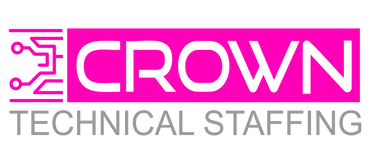Let’s talk about the elephant in (all) rooms.
There will always be implicit and explicit expectations.
In our journey to build thriving organizations and teams, clarity is paramount. From the initial hiring process to the ongoing development of leaders, ensuring that expectations are explicit and measurable is not just beneficial – it’s essential.
Unspoken, undefined, or unmeasured expectations will often lead to frustration, and resentment, and could cause your best and brightest to run for the hills.
The Interview Process: Where It Begins
The process of managing expectations starts from the first interaction – the interview. It’s the time when you as an organization and the potential executive are getting to know each other. But all too often, the expectations are left unspoken. Vague job descriptions, ambiguous roles, and unclear reporting structures create fertile ground for misunderstandings.
Consider an engineering executive responsible for optimizing supply chain processes within a manufacturing company. They’re given a broad directive of “improving supply chain efficiency.” However, what specific areas of the supply chain should they focus on? Is it procurement, inventory management, or distribution logistics? Are there particular cost-saving targets they need to meet or quality control measures they should implement?
Moreover, if part of their role involves vendor management, what expectations exist regarding supplier relationships? Should they negotiate better contracts, ensure on-time deliveries, or enhance supplier diversity?
Without clear answers, frustration and disappointment are bound to creep in.
The Onboarding Experience: Cementing Expectations
Once an executive is hired, the onboarding process plays a pivotal role in setting expectations. It’s not just about completing paperwork and introducing the new hire to colleagues; it’s about aligning their understanding of the organization’s culture, mission, and values.
Effective onboarding helps executives understand the organization’s expectations for them and what they can expect in return. It’s an opportunity to clarify roles, responsibilities, and performance expectations. Without this step, executives may find themselves adrift, and unsure of what’s expected of them, which can lead to dissatisfaction and disillusionment. In an effective onboarding, an executive gets time to talk to their team and understand what they expect from their leader as well.
Defining Clear Metrics and KPIs
To prevent misunderstandings and foster clarity, it’s essential to establish measurable criteria for assessing performance in various areas of the manufacturing process, such as vendor relationships, operations, and team performance. Key Performance Indicators (KPIs) should be defined for different roles within the organization.
Instead of vague directives, such as “optimize machinery production,” consider setting specific KPIs like “reduce production downtime by 15% within six months” or “improve Time-to-Market efficiency. Decrease the average time from product conceptualization to market launch by 20% within the next fiscal year” These precise benchmarks offer a roadmap for success, guiding executives towards tangible outcomes.
Do you have KPIs in place to measure operational efficiency and impact? What about team motivation, satisfaction, and morale? Giving a leader clear and measurable targets ensures that everyone is on the same page about what success means.
Communicating Expectations Effectively
Creating clear expectations is not a one-time event but an ongoing process. Effective communication is the key to ensuring that everyone is aligned and aware of what’s expected of them. Regular check-ins, performance reviews, and open lines of communication are vital in this regard.
Manufacturing and Engineering leaders should actively engage with their executive teams to provide feedback and support. Likewise, executives should feel empowered to seek clarification and express their needs and concerns. An open and transparent dialogue helps bridge any gaps in understanding and prevents festering resentments.
Mitigating Resentment and Frustration
When expectations are clearly defined, communicated, and aligned, the result is a harmonious and productive working relationship. Executives feel empowered, supported, and valued, while organizations benefit from their contributions.
Clear expectations mitigate the risk of resentment and frustration, creating a positive work environment that encourages retention and fosters success. Teams that understand what’s expected of them can collectively work toward common goals with enthusiasm and purpose.
The next time you are bringing on a new leader, remember that “Unspoken Expectations Are Premeditated Resentments.” Prioritize effective communication, creation of clear metrics and KPIs, and ongoing dialogue to build stronger, more successful teams and to multiply your impact.
As an Engineering and Manufacturing recruitment firm, Crown Technical Staffing® can help you to understand the potential for growth in your current team, helping you to keep hold of the best staff and learn more about finding new talent as your needs grow. Arrange a discovery call with our team and learn more about our process for helping your business to thrive.
Here are three ways that we can help…
CTS carries out deep talent mapping, nationwide, to ensure our shortlists contain only the very best leaders for your Engineering and Manufacturing teams.
1. We help to attract and retain the best candidates, specifically for your team, in addition to the frontline leaders that you’ll need for growth and stability.
2. Reduce the cost of acquiring and training new hires by supporting and enhancing the efforts of your onboarding team for the first 90 days.
3. Provide a zero-risk and no-cost assessment of your hiring strategies with a 15-minute consultation.


